The food of India is one of the world’s great gastronomic experiences.
Such an accolade is thanks, in no small part, to its lavish palette of spices, which made the nation’s fortunes back in the days when strong flavorings were worth as much as gold. India is the home of peppercorns, cardamoms, turmeric, and cinnamon (shared with neighboring Sri Lanka) and dozens of Asian cuisines partly owe their existence to India’s seasoning know-how.
In fact, Indian cooking is not one cuisine but many, drawing on the myriad cultures, customs, and microclimates in this vast country. What is known ubiquitously outside India as “curry” is actually thousands of different dishes, grouped under one umbrella name taken from the Tamil word kari, meaning “spiced sauce”.
Here’s a guide to the best things to eat and drink in India.
Enjoy all-you-can-eat rice with (almost) every meal
Raised on paddy fields as green as emeralds, rice is the national food of India, especially in South India. In thalis – plate meals with multiple sauces – you’ll normally be given a choice of rice or various kinds of flatbreads. Either way, this serving of starch is often bottomless, and servers may come around offering top-ups of sauces, too.
Most rice is white – often the famous basmati rice exported from India around the world – but you’ll find regional variations, from Assam’s sticky rice to the red rice of Kerala in the south. Rice is typically boiled, but you’ll often find it served as pulao – spiced with vegetables – or as biryani, traditionally steam-cooked with spiced meat in a sealed pot in what is known as the dum puhkt style.
Also look out for jeera rice, mixed with cumin seeds (delicious with a dollop of natural curd) and South India-style lemon rice, which partners well with fish. Then there’s the ubiquitous fried rice served by India’s Chinese restaurants – a low-spice option that children often prefer.
Where to try it: Various cities claim to produce India’s best biryani, but Hyderabad has one of the most convincing claims. Sample it at diner-packed, no-frills Hotel Shadab, or its closest rival, expanding local chain Paradise.
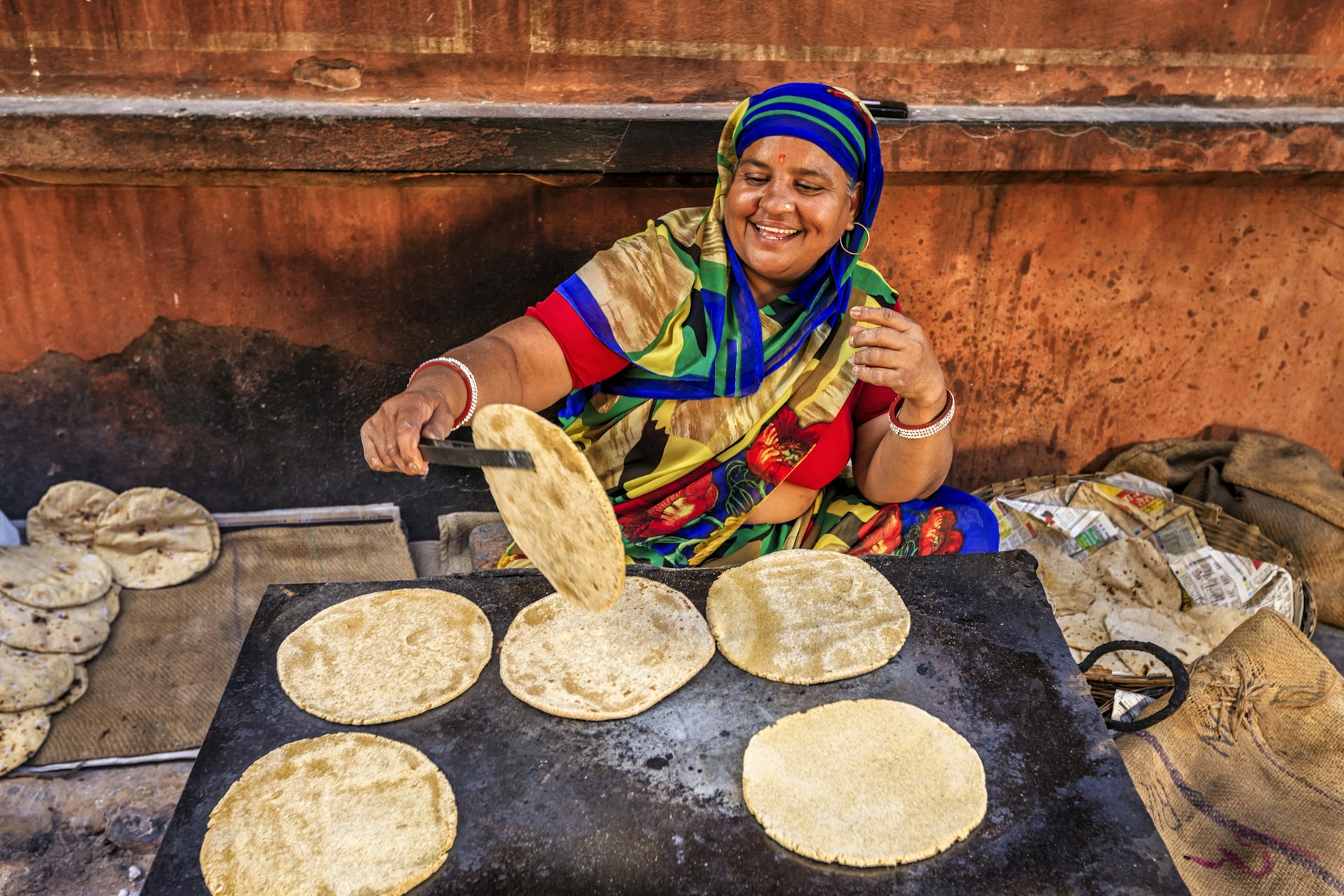
Break bread the Indian way
While rice is paramount in the south, wheat-based flatbreads are the favored starch in the north. Roti is the generic term for Indian-style bread, and the word is used interchangeably with chapati to describe the most common variety – an unleavened disc made with wholewheat flour and cooked on a tawa (hotplate). After cooking, the chapati may be smothered with ghee (clarified butter) or oil. In some places, you’ll find rotis – bigger and thicker than chapatis and sometimes cooked in a tandoor oven.
A more indulgent version is the paratha, a layered, butter-rich, pan-fried flatbread, which also comes stuffed and makes for a hearty and popular breakfast. Another one for fried food fans is puri – puffy fried-bread pillows that can be as small as your hand or as big as a dinner plate, served as a sauce soaker-upper.
The plump Punjabi naan is a larger, thicker bread, baked in a tandoor and usually eaten with meaty sauces or kebabs (it also comes stuffed, though more commonly, it’s slathered in ghee). Around Amristar, look out for naan-like kulcha, flavored with herbs and spices and sometimes bonus ingredients such as pomegranate seeds.
Where to try it: The dhabas (roadhouses) of Punjab are the best places to seek out flavorsome Indian bread. In Amritsar, head for Kesar Da Dhaba and Bharawan Da Dhaba, both feted for their excellent house kulcha.
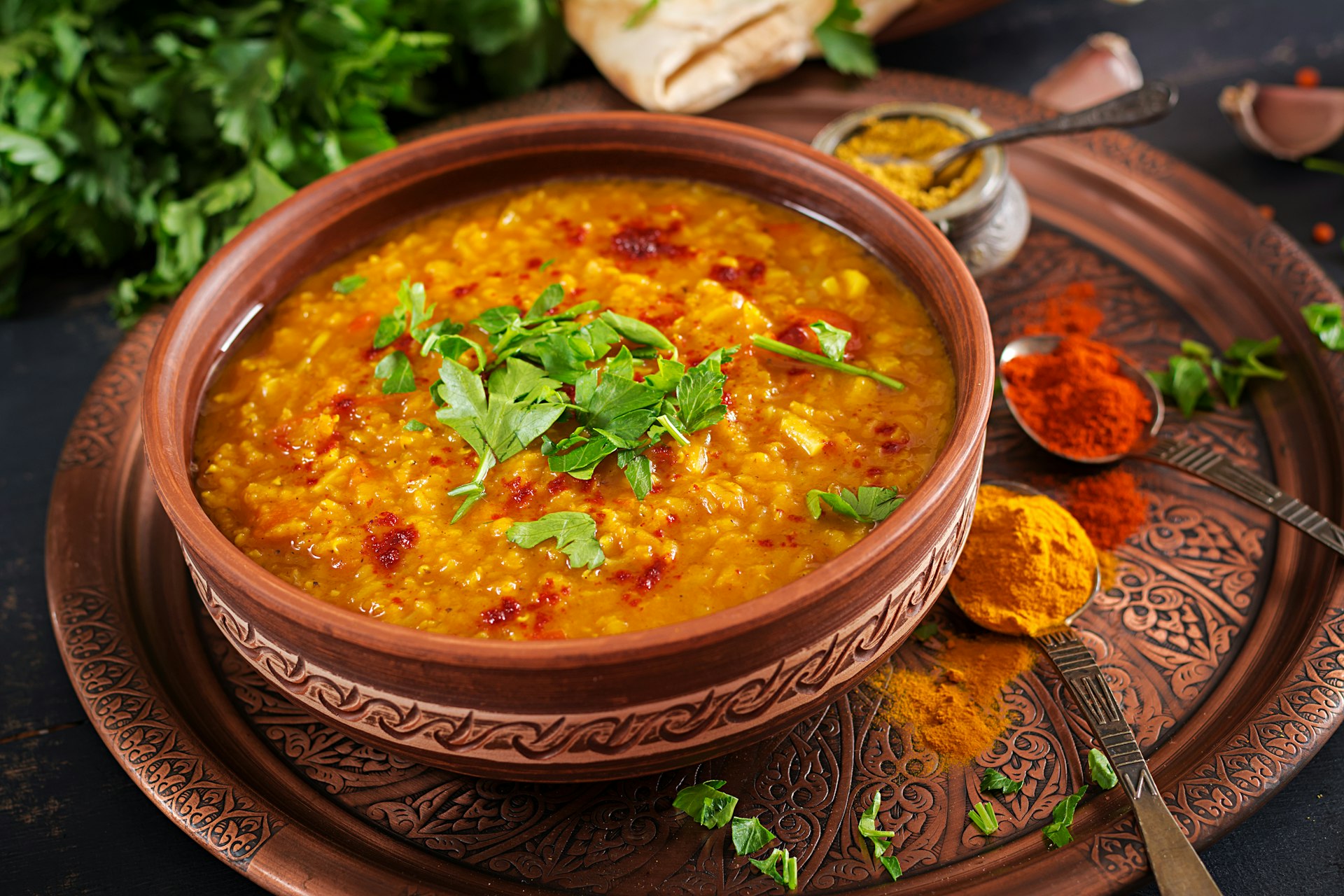
Indian food is dhal-icious!
The whole of India is united in its love for dhal (curried lentils or pulses). You may encounter up to 60 different pulses stewed into various spicy concoctions. The most common are channa (chickpeas), tiny yellow or green lentils called moong (mung beans), salmon-colored masoor (red lentils), ochre-colored tuvar (yellow lentils, also known as arhar), rajma (kidney beans), urad (black gram or lentils) and lobhia (black-eyed peas).
Where to try it: To start the pulses journey, seek out chole bhature – a tasty stew of spiced chickpeas served with puri – in the backstreets of Old Delhi, at standing-room-only Sita Ram Diwan Chand in Paharganj.
Feast on the meaty flavors of Mughlai cuisine
The Mughal Empire ruled over northern India for more than two centuries, leaving an indelible mark on India’s architecture, culture, and cuisine. Those meaty Indian curries that are served the world over have their origins in the food served in the courts of Mughal emperors, enhanced, refined and reinvented over the centuries. The meaty cuisine of Chettinad, a Muslim region in South India, is also highly celebrated.
Some curry dishes may be familiar – chicken tikka masala was actually invented in England and reimported to India – but you’ll also see curries named for the pot they are cooked in, such as chicken karahi, made in a wok-like metal pan. Then there’s butter chicken, a Mughal-inspired sauce invented in Delhi, with lashings of pureed tomatoes and ghee.
Chicken, lamb, mutton, and sometimes goat are the main meats used in Indian cooking; eating beef is taboo for devout Hindus and eating pork is taboo for Muslims. Some curries are hot, some are sweet, some are sour with tamarind, and others are infused with strong flavors of pepper, cloves, mustard, star anise, and fenugreek.
The Mughals were also responsible for India’s rich menu of kebabs – many prepared succulently moist in the tandoor (clay oven). Tandoori chicken is just the gateway to a whole world of grilled meats, from minced lamb seekh kebabs to sausage-like lamb kakori kebabs and yoghurty, nutty chicken reshmi. The artfully spiced kebabs of Awadh (Lucknow) and Hyderabad are particularly celebrated.
Where to try it: Butter chicken is one of India’s favorite dishes, so why not sample it at the restaurant where it was invented – Moti Mahal in Delhi. Continue the carnivorous journey in the lanes by Delhi’s Jama Masjid mosque, where Karim’s has been serving rich mutton burra to worshippers for more than a century.
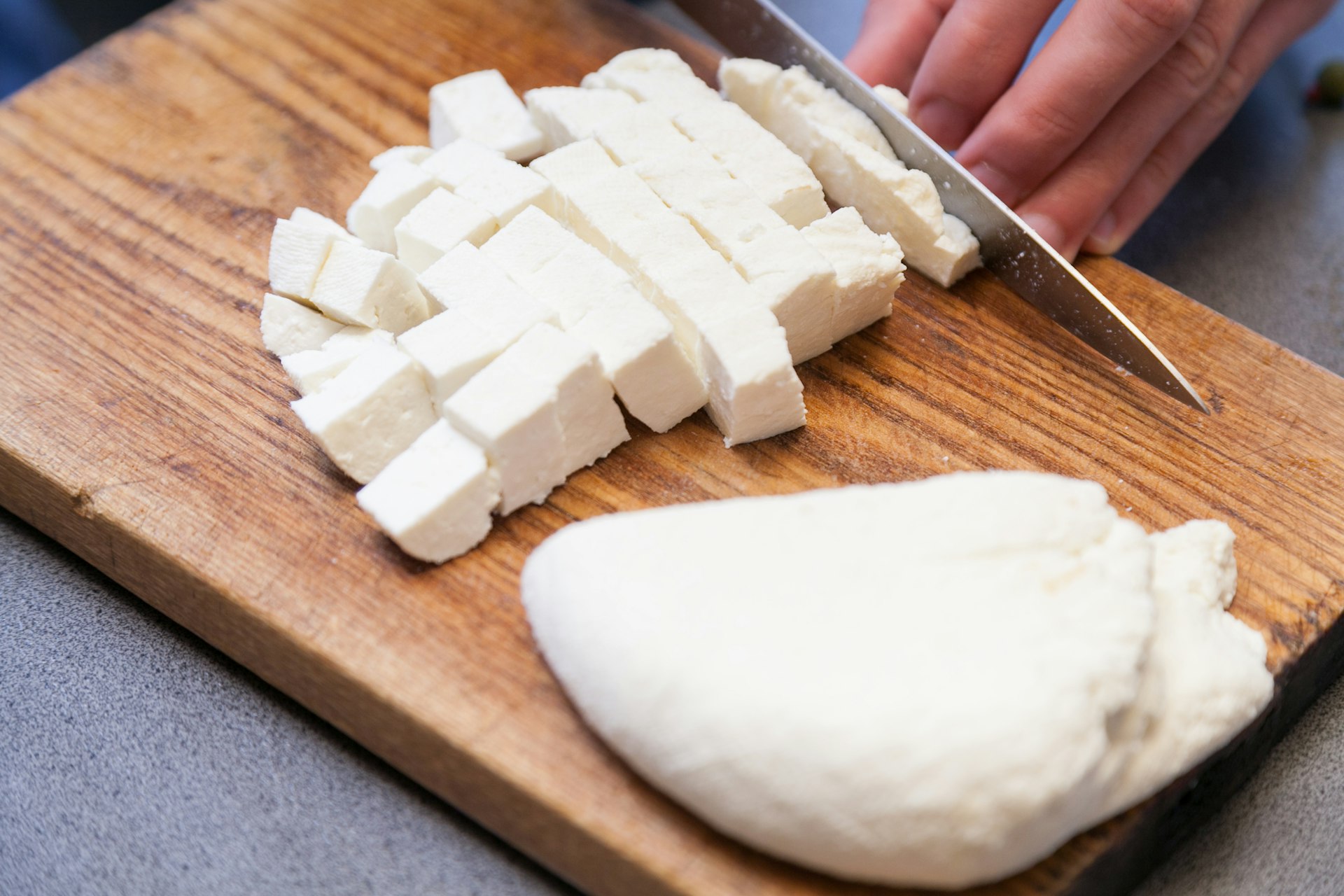
Curds, milk, ghee, and chhena (or why India gives cows such respect)
Milk and milk products make a huge contribution to Indian cuisine – indeed, it’s part of the reason the cow is so revered in Indian culture. Dahi (curd) is commonly served as a side dish and it’s great for taming heat. The most common place you’ll encounter curd is as part of a lassi – a thick, yogurt drink that can be sweet, salty, flavored with mango, or even laced with marijuana.
Ghee (clarified butter) appears in almost everything, and paneer (a semi-firm Indian cheese) and chhena (cottage cheese curds) are useful protein sources for vegetarians. Milk, ghee and chhena also form the basis of many Indian sweets and other desserts.
Where to try it: You’ll find lassis served almost everywhere, but people speak in hushed tones of respect about those served at Blue Lassi at Kachaudi Ghat in Varanasi.
Seafood on both of India’s coasts
India has around 7500km (4660 miles) of coastline, and seafood is a staple ingredient in coastal areas, especially on the stretch of the west coast running south from Mumbai. Kerala and Goa are both known for their succulent prawns and fiery fish curries, and the fishing communities of the Konkan Coast – sandwiched between Goa and Mumbai – add more fish dishes and crabs to the mix.
Saltwater fish is also popular on the east coast around Odisha (Orissa), while bony estuarine and freshwater fish feature prominently in the cuisine of West Bengal. You’ll find more fishy treats on the far-flung Andaman Islands, where the cuisine starts to lean towards Sri Lanka and the islands of Southeast Asia.
Where to try it: The backstreets of central Mumbai are dotted with celebrated restaurants serving the seafood cuisine of the Konkan Coast. Try local favorite Mahesh Lunch Home near the Flora Fountain.
Indian pickles, chutneys and chaat
Pickles and chatnis (chutneys) are accompaniments that add extra zing to meals and form the key flavoring in many kinds of chaat (Indian-style salad). A pickle can be anything from a tiny pickled onion to a delicately crafted melange of fruit, nuts and spices. Strongly flavored lime pickle is the default in many regions. Chatni can be sweet or savory and made from many different vegetables, fruits, herbs, and spices.
Where to try it: Mumbai seafront is a great place to try bhelpuri, a chaat made from chopped onion and coriander, tamarind chutney, puffed rice, and bhel (crisp noodles); find it at Juhu Beach and Girgaum Chowpatty.
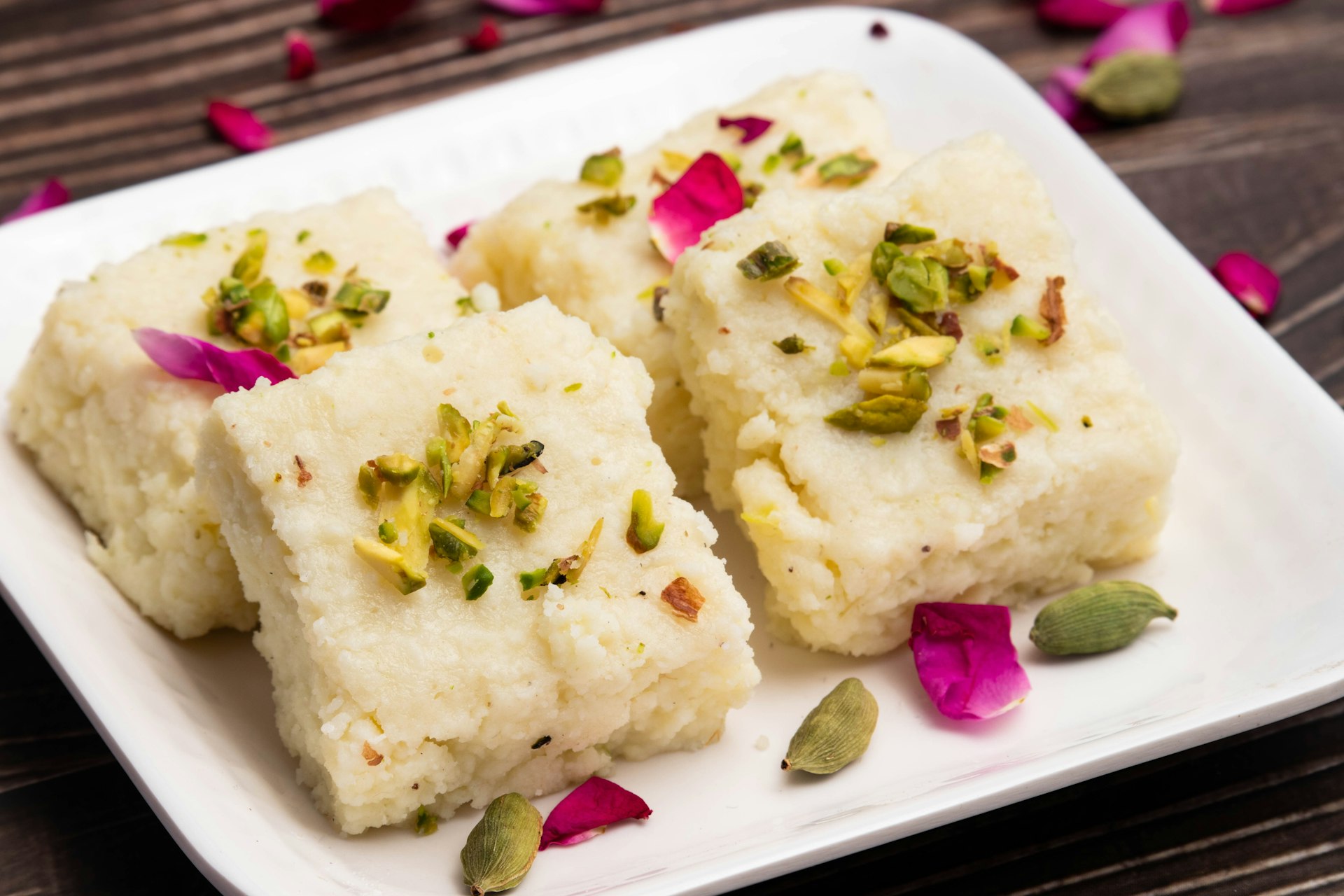
Make your teeth tingle with Indian sweets
India has a wildly colorful kaleidoscope of sticky, squishy mithai (Indian sweets), most of them super sugary. Each year, an estimated 15 tonnes of pure silver is converted into edible foil to decorate Indian sweets, especially during the Diwali festival.
The main confectionery categories are barfi (a fudge-like milk-based sweet), halwa (made with vegetables, cereals, lentils, nuts, or fruit), ladoos (sweet balls made with gram flour and semolina), and sweets made from chhana (unpressed paneer). There are also simpler offerings such as crunchy jalebis (coils of deep-fried batter dunked in sugar syrup) and petha (candied ash gourd) that you’ll find in many parts of the country.
Kheer (called payasam in the south) is one of the most popular desserts – a creamy rice pudding with a light, delicate flavor. Other favorites include falooda (a sweet rose milkshake with rice noodles), hot gulab jamun (deep-fried dough soaked in rose-flavored syrup), and refreshing kulfi (Indian-style ice cream).
Another end-of-meal palate-cleanser in India is paan, a fragrant mixture of betel nut (also called areca nut), lime paste, spices, and condiments wrapped in an edible, silky betel leaf. Ask for mitha (sweet) paan rather than saadha paan (which includes tobacco).
Where to try it: Kolkata is a great place to try sweet Indian treats. Seek out the Nobin Chandra Das & Sons sweetshop in the Sobha Bazar, founded by the family that invented rasgulla – soft cheese balls soaked in sweet syrup.
Start the day right with a South Indian breakfast
The breakfast treats of South India have been exported all over the country, and you’ll find dishes such as the dosa (rice and lentil-flour pancake, often stuffed with spiced vegetables and sometimes as large as a rolled up newspaper) on pretty much any street in India. Dosas come in myriad forms, but the potato-stuffed masala dosa is the most popular incarnation.
Other popular breakfast snacks include idli sambar (a steamed rice cake made from fermented rice and lentils) and vada (spiced, lentil-flour donuts). All are usually served with a bowl of hot sambar (a soupy tamarind and lentil sauce) and another bowl of cooling coconut chatni (chutney).
Where to try it: If you’re seeking a low-cost South Indian breakfast, head to the nearest railway station canteen, or seek out a branch of Indian Coffee House, a nostalgic chain run as a cooperative and staffed by waiters in turbans and cummerbunds.
Feast on India’s fabulous street food
Whatever the time of day, you’ll find street-food vendors frying, boiling, roasting or baking different delicacies to lure peckish passers-by. Vendors usually have one special dish that they serve all day – for example, fried bhajis and pakoras (fritters fried in gram-flour batter).
Fabulous examples include aloo tikki (spicy fried potato patties), gol gappa (puffed dough spheres with a spicy filling, also known as panipuri or gup chup), Mumbai’s vada pav (a fried potato dumpling in a bread roll), and Kolkata’s kati roll (a kebab rolled inside a paratha with onions and sauce).
Top tip: if locals are avoiding a particular vendor, you probably should too. Any place popular with families is likely to be your safest bet.
Where to try it: The alleyways of Old Delhi are famous for their street food delights. Start the adventure on Chandni Chowk, the historic Mughal-era bazaar running down to the Red Fort, where Old Famous Jalebi Wala has been serving sweet fried dough swirls for a century. Nearby, the lane known as Parantha Wali Gali is lined with vendors selling stuffed parathas.
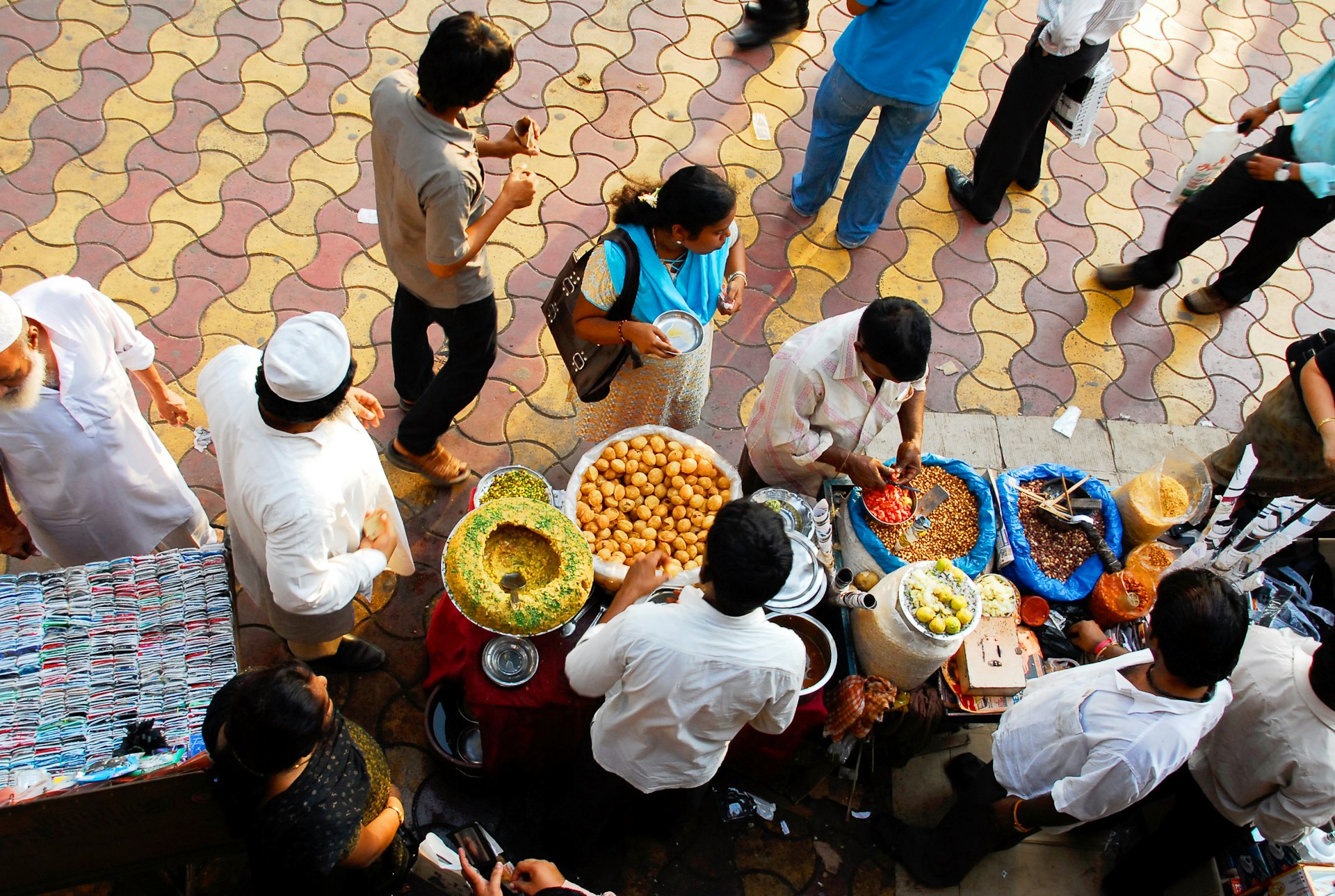
Share a tipple with the locals
Indians are not huge consumers of alcohol, partly for religious reasons. Some states or regions are dry, or dry at certain times, such as during religious events. However, there’s a growing enthusiasm for wine and spirits in larger cities, and also the state of Sikkim, where many of India’s licensed liquor producers are based.
Indian beers tend to be strong, fizzy lagers, but some craft beers are edging into the market. Indian wine from the hills around Nashik near Mumbai has a growing reputation. Indian spirits are nominally divided into whiskies, brandies, and rums but they taste similar; there’s not much to divide local vodkas and gins either. In Rajasthan, seek out traditional royal liqueurs flavored with aniseed, cardamom, saffron, rose, dates, and mint.
Other traditional local drinks include mahuwa, distilled from the flower of the mahua tree in central India during March and April. Exercise caution if you’re not confident of its source: some producers of mahuwa adulterate the drink with methyl alcohol.
Rice beer is brewed all over eastern and northeastern India, while in the Himalayas you’ll find tongba, a warm beer prepared from millet, and a strong-grain alcohol called raksi. On the coast, especially in Goa and Kerala, you’ll find toddy, fermented sap from the palm tree, and feni, a spirit made from coconut or the fruit of the cashew tree.
Where to try it: You’ll find feni all over Goa, but Cazulo Premium Feni in Cuelim is the first feni distillery to offer tours where you can see the process and sample the finished product.
Vegetarians and vegans
Vegetarian and vegan food in India is abundant. Indeed, in the south of the country, “veg” (without meat) and “pure veg” (without meat or eggs) are the norm, while “non-veg” is relegated to backstreet status. Many Hindus are vegetarian, as are all Jains, some of whom are also vegan.
Milk products such as milk, butter, ghee, and curd are included in the majority of Indian dishes, so if you are vegan, your best bet is to seek out restaurants run by Jains. If in doubt, carefully explain your requirements. Big hotels and restaurants in larger cities are getting better at catering to vegans.
To sample South Indian vegetarian cooking in all its rich variety, the chain restaurant Hotel Saravana Bhavan is a local institution, serving delicious vegetarian thalis and other meat-free treats, with branches all over South India, including in Mylapore in Chennai.

